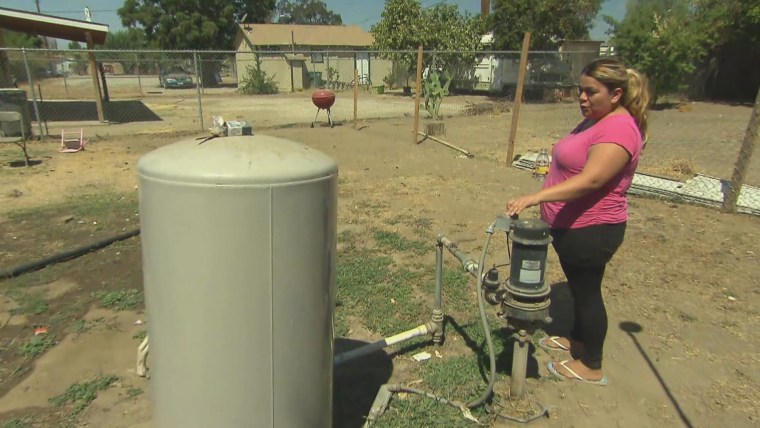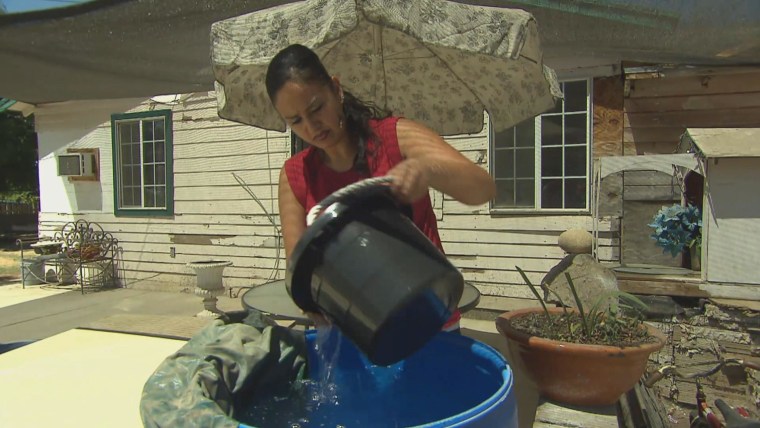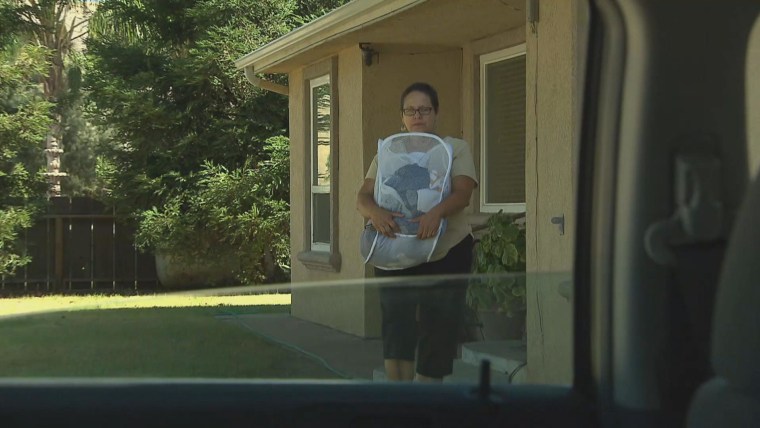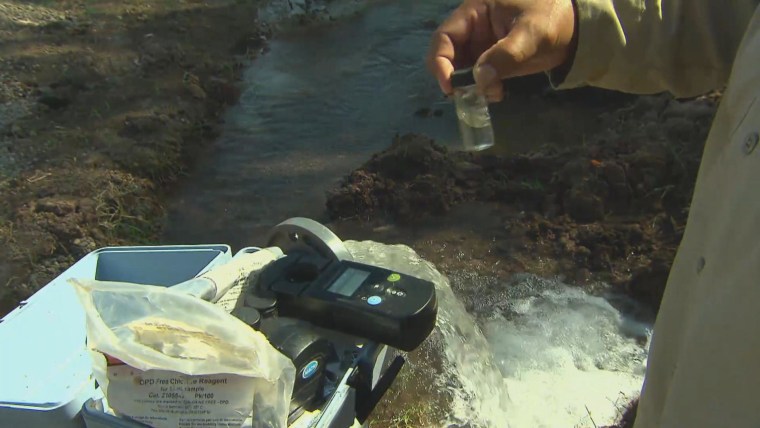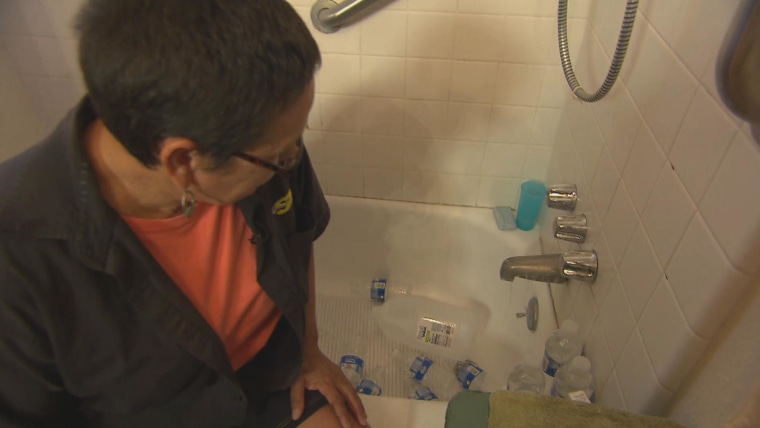TULARE COUNTY, Calif.—The old man knew of the fines for people caught wasting water. He heard the plea for conservation from Governor Jerry Brown. But the water police can’t scare a person whose water isn’t running in the first place.
“Look,” said Carlos Chavez, a retired farm hand in the small town of Seville.
He turned the wheel on a big outdoor faucet, the kind of high pressure spigot that’s illegal to operate in California without at least a hose attached to it. Nothing came out except air. It was the same story inside his home, where his plates piled up beneath a kitchen faucet as dry as the shop model.
As the California drought approaches its fourth year, Seville’s well is one of hundreds of private water holes coughing up sand and spitting air in the Central Valley, according to Tulare County officials. As many as 100,000 more wells are at risk around the state if the rains don’t come by October.
In what is still the most productive agricultural county in America, the pantry of brands like Hershey’s and Häagen-Dazs, Sun-Maid and Yoplait, the rising number of completely dry homes here has shocked officials and become a visceral symbol of California’s unending dry spell. Thousands of people—most of them farm workers and their families—find themselves with no running water to wash, drink, flush or cook.
“We’re the epicenter,” said Eric Coyne, a spokesperson for the Tulare County Resource Management Agency. "The need here is dire."
With the help of volunteers, Tulare County has handed out thousands of gallons of emergency bottled water, a lifeline to the modern world. But now the state is also working on the well problem, according to Kelly Huston, deputy director of the Governor's Office of Emergency Services. Just don't expect a solution to flash like lightning. "As the drought continues," he warned in an email, "more wells are likely to go dry."

Almost every dollar in Tulare County has deep ties to planting, picking, or packaging food. But this summer, for the first time that residents can remember, the plants and animals got cleaner, more abundant water than many of the people who tend to them. The farms have the resources to drill deeper, taping ancient aquifers the backyard well owner can't reach.
“It’s never been this bad before,” said Chavez, looking back on nearly 80 years in Seville, which hasn’t had reliable running water in months.
Chavez and his wife spent their prime as fruit pickers and boxers, making a good enough living to buy a little house, raise children, retire comfortably. In his youth, Chavez recalls, “everybody worked in the fields and the water was cold and clean and it tasted good. But now…” He stopped and looked up, pointing to the brown spire on his once-green pine tree, the mark of another drought-induced death.
A few blocks away, Maria Dominguez, a 28-year-old mother of two, pulled over to question a stranger she saw standing near the town’s faltering well. “What can you tell me about my water?” she hollered. “I don’t know how much more of this I can take.”
Since the middle of summer, she’s been filling buckets with a friend a town over, then leaving them outside to warm in the sun. It’s the only way her mother, a picker, can sluice the field dust off before kissing her grandkids goodnight.
“It’s feels like we’re back in Tijuana,” said Dominguez, who came with her family when she was a little girl. “This is how they do it in Mexico.” She was on the way home with boxes of food and water, sixty pounds of drought disaster relief, paid for by the state and pulled off the back of flatbed truck.
One of her neighbors, Ray Quintana, was nearby helping the delivery. He served two combat tours in Vietnam, driving convoys through the jungle. Now, at 62, the water crisis has made his hometown feel like a conflict zone instead of some of the richest farmland on earth.
“To shower, I use a cup, just like when I was in ‘Nam,” he said, stepping away from a stream of glistening neighbors, most of them just back from the fields. Some had dust on their ear lobes and deep in their wrinkles. None had a simple way to shower in town that night.
“We’re living in a third world country now,” he continued.
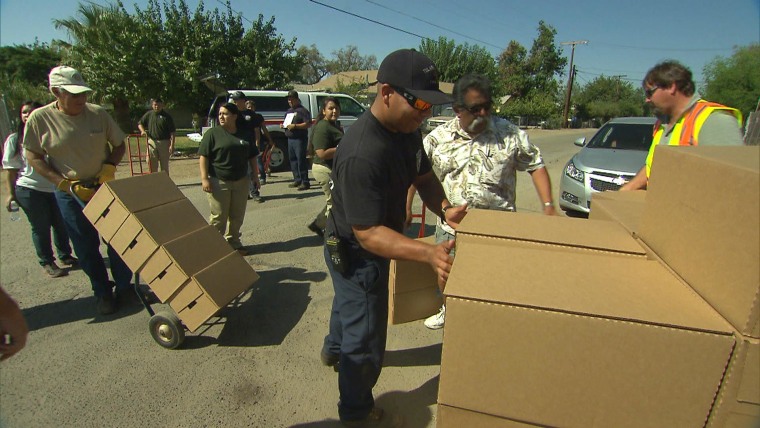
For more than a decade, Ray and his wife Becky have occupied a cheerful two-bedroom house on Seville’s main road. The carpets are soft and the butter tray is real silver. But like the rest of town, the Quintanas are a hard-working family with no running water. They are a strange hybrid of upright citizens and bewildered refugees, like squatters who happen to own their homes.
“Sometimes I pull over at a gas station and go into the bathroom, just to wet my hair down,” admitted Becky, a school bus driver. “I feel like a homeless person.”
There are people like her all over this county, in places like East Porterville and Monson, people who walk through doors with brass knockers and then live like hobos in an abandoned building. They bathe out of a bucket, which they refill at convenience stores, fire stations, and churches. They flush with a bucket, too, and because the water may be tainted, they teach their kids to close their eyes and mouths when they rinse off. They never feel clean.
And in the morning they have to do it all again.
“I think of water 24 hours a day,” Becky said. “When I go to sleep, I’m thinking about tomorrow morning. If I don’t have any water, what’s my plan? In the evening I’m thinking, what am I going to do? Am I gonna take a shower at my daughter’s house? Or am I going to take a shower at my sister’s house? I’m constantly thinking about Plan A, Plan B.”
“I think of water 24 hours a day.”
By the sad standards of parched towns, Seville is one of the fortunate places. Its water system has been troubled for years, threatened by fertilizer run-off and old, leaky pipes, lashed together in places by old bicycle tire inner tubes, according to Diane England, an analyst for the county water commission. "The system was already hanging by a shoestring," she said, "and the drought stressed it to the breaking point.”
But at least Seville had an infrastructure. For that reason, when the well faltered sometime in June, the state stepped in to fund a new well, three times deeper than the old one. It may produce water as undrinkable as the old well, Becky said, showing off an August 2014 flyer that advised residents not to trust what may come from their tap. But, hey, at least the water will flow.
That won’t be the case elsewhere in the county. Aside from the odd chemical spill and poisonous algae bloom, Americans may imagine that access to clean drinking water is a far-off problem, a challenge for people who bath in rivers and sleep under corrugated iron roofs. But roughly 2 million people right here at home lack access to clean water, according to the Rural Community Assistance Program, a federally-funded network of small town water systems.
Most of those people are black or Latino, and they tend to live in the West and South, where climate change could make water problems even more acute. That’s certainly the fear in East Porterville and Monson. In a normal year, the private wells pump water just fine, and the state’s industrial farms are served by a network of snow-and-rain-fed canals.
But this year, the farms of Tulare County got almost no water from the canals, forcing them to drill into the ground water. The result was like everyone at the prom putting a straw in the same punch bowl at the same time, and sucking hard. It lowered the water table until eventually the residential wells were dry.
“It’s literally a race to the bottom,” said Laurel Firestone, a prominent California water activist.
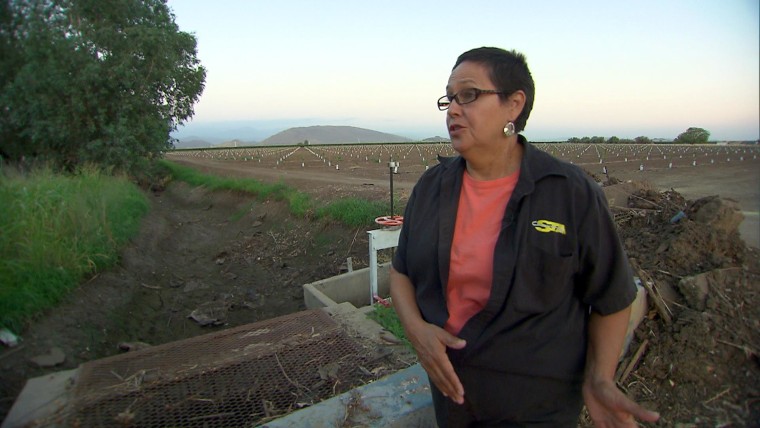
But while farms can invest heavily in deeper wells, most of the agricultural workers they employ can’t afford to do the same at home. When a residential well goes dry in East Porterville—as have more than 150 this year, according to the county—people turn first to their neighbors, who are often happy to help. Jesus Halfaro, a retired carpenter here, said he has almost 20 families on his still-thriving well.
“I’ll give you water until God say I going to be like you,” he said, leaning on a fencepost, his shirt unbuttoned mid-chest, philosophizing about the basic human right to clean water. “I mean, we can endure a little hardship. Everybody does. But try to go to the bathroom with no water? That will mess you up.”
When a neighbor’s well runs dry, and that neighbor’s neighbor runs dry, residents turn reluctantly to store bought water. On a recent morning, Lila Rosales, 17, was headed to the store on a water run, when she paused to calculate the costs of her weekly journey. As she spoke, her infant daughter snoozed nearby in a car seat.
Lila's father was a picker but that week he was off with a chainsaw, chopping down a grove of parched orange trees. For the work, he expected to take home $300—$80 of which she would pour directly into blue gold. “Well, my baby,” she said, “she’s a hot-head, so I guess you can say I have to bathe her like every day, maybe twice a day, and it’s like, I have to run to the store to get a least a gallon of water.”
"Every night I pray ... I pray for water!”
Unlike Seville, there is no long-term plan for helping the people of East Porterville. With enough money, patience, and political will, the homes on the east side of town could be fit to the water system that feeds Porterville proper. The medium term plan, funded in part by a $500,000 grant from the state, is for volunteers to go door-to-door, as Ray Quintana did one recent Friday, dropping off a ration of bottled water per person, per week.
It was grueling work, he found, and he didn’t mean physically.
“God bless, America,” he said, after a day spent peering into one waterless home after another. “It’s still the greatest country in the world, but we need to take care of our people, you know?”
In the absence of a bailout, some people are trying to take care of themselves. One man in Seville installed his own supplemental pump, sucking in enough water to create an oasis just off his back porch. Another man took to YouTube, where the click-count on “Dig Your Own Well” videos expands each day the water table does not.
But prayer is perhaps the most popular option, if not in a church than in the cathedral of one's own hot shower. Manuel Valdez is a smiley-eyed 70-year-old who decided to show off his shower prayer, shimmy and all, near the chip rack at the Seville corner store: “Please God, you give me some water, you know what I mean—I am all soaped up. Every night I pray. I kneel down and I pray for everything, for everyone. I pray for water!”
Finally, there are the realists. Maria Patcheco is a 29-year-old mother of three, including a 6-week-old who came home from the hospital days before the Patcheco’s well went dry. The faucets gave a final groan, the shower gasped, and the toilet bowl gulped. Then the water was gone.
Soon, the Patchecos will be, too. They’re not planning to be like the Chavez family, struggling through an unnecessarily hardscrabble retirement. They don’t want to live “Mexico-style.”
“Everything was so nice,” admitted Maria. But not anymore. “California is going dry.”
